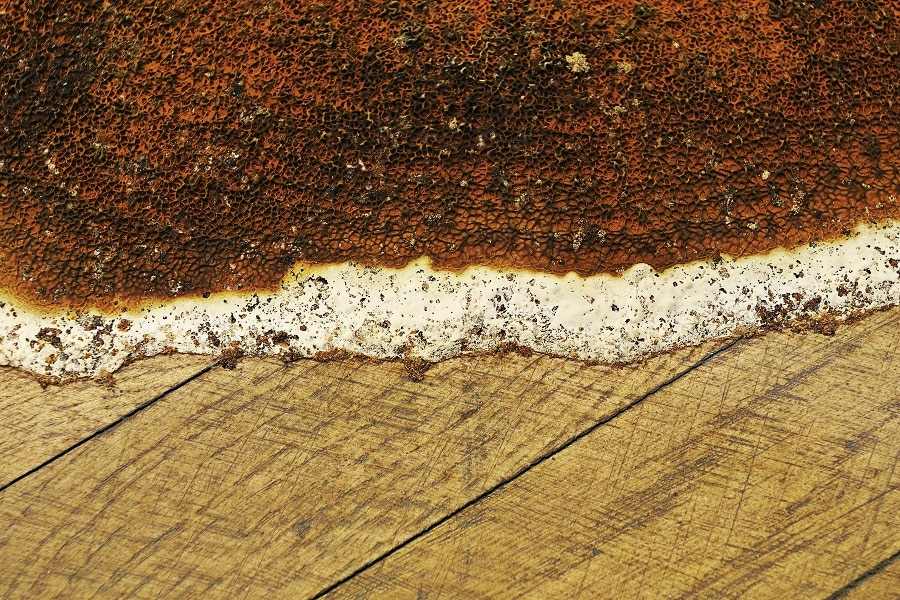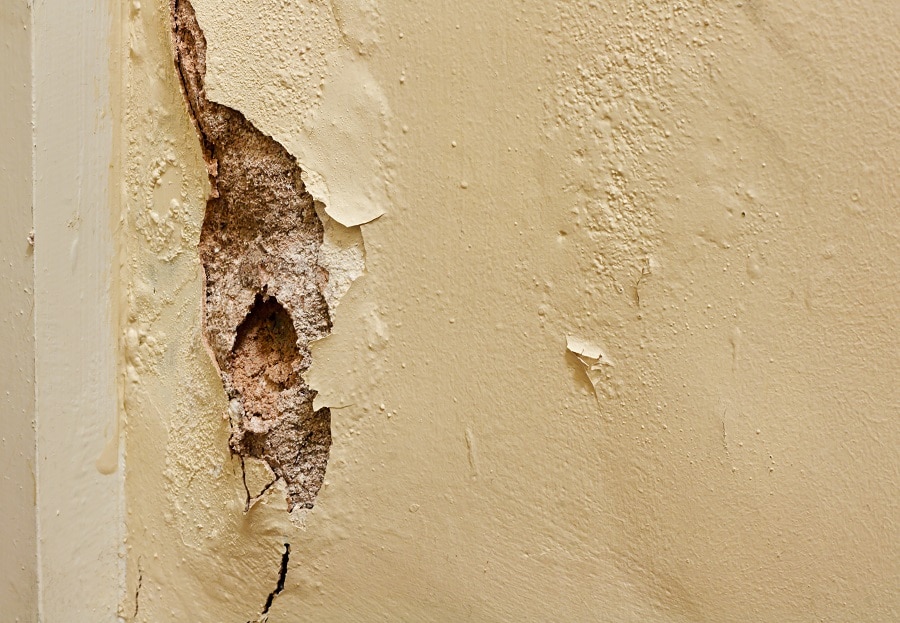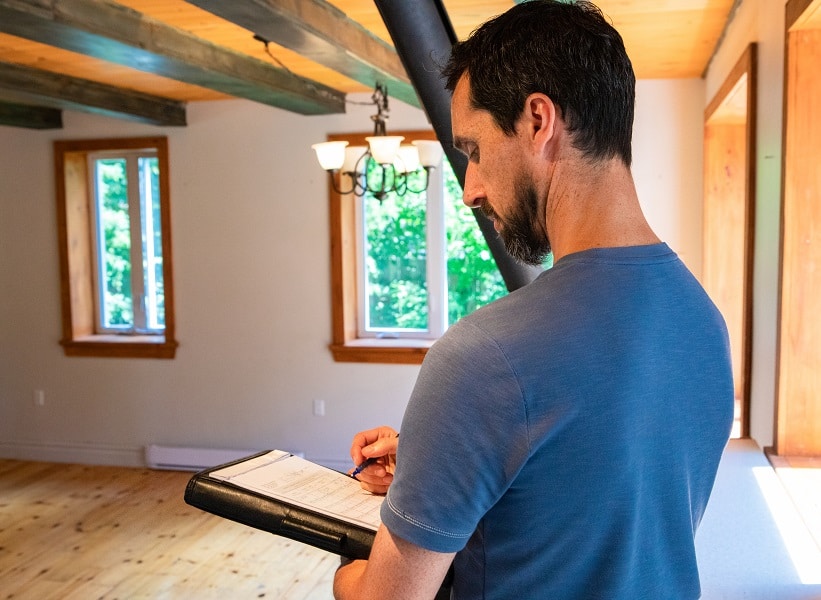What is dry rot?
Dry rot is a general term which describes a type of wood decay fungus The wood is broken down by fungi, as the Mycelium decomposes the wood, resulting in fine dust particles that are made of sawdust and wood chips, forming colonized areas that are referred to as fungal blooms. Dry rot fungal spores need an adequate place to land and begin their colonies before they disperse through the underlying wood. A lot of these spores are present in soil and old wood already infected by dry rot.
This means that dry rot can re-infect even treated wood if it is damp enough (i.e., below 15% relative humidity). While Dry Rot can be harder to spot, it is potentially more damaging than wet rot. It usually happens where you are not looking It could be under the plaster, under your floorboard, or in your loft. And while you might be tempted to ignore the signs, it’s crucial to identify them and take action immediately.
Our Guarantee
- upto 30 year guarantee
- customer focused team
- 20 years combined experience
- portfolio of satified customers
- attention to detail
- Construction line accreditation
- public liability insurance
- CHAS accreditation
What is the difference between dry rot and wet rot?
These specific types of dry rot use different species of spores, meaning that they look different from wet rot. The biggest difference, however, is that wet rot needs significant moisture to spread. Contrarily, dry rot does not spread as easily as wet rot. This is because it uses the capillaries within timber rather than mycelium that typically forms the basis of a Dry Rot infestation. Dry rot is the greatest danger when it comes to timber damage, it spreads throughout buildings, frequently hidden by wallpaper or carpets. Wet rot fungus, on the other hand, happens more frequently but is less serious, usually rotting is limited to areas where the wood becomes and stays wet.
Call Our Sussex Damp Experts team now for quote, consultation and advice:
Call on 01273 257 765.
What are the causes of dry rot?
Many species of fungi cause dry rot. The most popular one in Littlehampton is Serpula Lacrymans. it can spread from your home’s walls to the floors, and even the plaster is not fixed soon enough. It can have a major negative impact on the structural integrity of timber, and also the integrity of your home. Dry rot can develop if you don’t keep the amount of moisture in your timber balanced. This will attract the fungus that will use this moisture to extract nutrients. The expression “dry rot” is used to contrast between “wet wood” and “dry wood rot.”
Wet wood feeds on dry rot. These hyphae need only 20% moisture to survive, while fungal spores need more than 30% moisture to generate hyphae after this. These threads can turn into fungal bodies called mycelia, which can also extend to find more wood in stone and brick. The fungi will remove hemicellulose, cellulose, and H2O, leaving behind a weak structure of the original wood. A specialist survey will be needed, this specialist survey can help you identify the fungus that is causing your timber decay. This is important as the remedies for these damages can vary based on the actual cause.

The dangers of dry rot in Littlehampton
Dry Rot Effect on your Property
Dry rot spreads so fast it can possibly cause you to lose your house integrity. As Dry Rot breaks down your properties structural timber, it will eventually cause it to crumble. In serious cases, this can trigger various parts of your house to break apart. Dry rot, however, does not attack your brick or stone; it only travels across it. Hence, regular checks are essential.
Dry Rot can cause extensive damage, and it is vital that you get to it as soon as possible. When fungus is evident, you need to call a restoration expert right away to prevent mold growth from worsening any damage that may be apparent. If you think you might have a problem with dry rot, get a survey from Sussex Damp Experts today.
Dry Rot Effect on Your personal health
Actually it is not the fungus that causes the damage. Yet, if the conditions in the home allow dry rot to occur, these environmental conditions can be damaging to your health. The pollution could cause illness and even death for children, old people and people with conditions like asthma.
What are the Warning Signs of Dry Rot?
The sooner you find dry rot, the less time and money you need to waste on treating it. If you see any of the signs and symptoms listed below, a full assessment is recommended.
-
The beginning of the dry rot cycle
The spores are carried by wind. If they are taken to the wood, they may begin to feast on it. They can germinate and produce hyphae as they feed on it, if the wood provides them sufficient nutrients to do so. The hyphae grow and join up into a lot of tangled spaghetti-like threads called mycelium. Mycelium may be white or light grey. This mycelium can also stretch into your properties mortar, bricks and plaster to try and reach more timber.
-
Your timber is damaged.
If the wood is infected by dry rot, it can become flexible and dry. This will sometimes even cause your timber to crumble. The first sign of dry rot is darkening of the wood. Specifically, dry rot can cause something called cuboidal cracking. Cuboidal cracking/splitting is the result of timber breakage around 50 mm. Sometimes, this damaged wood may also have hyphae, white fungal growth. Hyphae can look like cobwebs and is a common symptom of dry rot.
-
Your timber will smell.
If your timber is affected by dry rot, it will have a distinct, fungal, dank and musty odour. This happens, even when you can’t see an outburst of dry rot. Just because there is a smell, however, does not mean that dry rot is present.
-
Your timber will have fungus bodies on it.
Dry rot is the most noticeable kind of wood rot and one of the final stages of fungal attack. Mushroom-like fruiting bodies will begin to bind themselves to your wood. They occur when dry rot can no longer feed on the wood, so the fungus has to churn out spores instead.
-
Your timber will have spore dust.
Dry rot can affect a variety of timber that is not necessarily already rotten and damp. If you are seeing splotches of rusty coloured dust accompanying decomposed spores, it could be a sign of dry rot. Fruiting bodies release this spore dust in the last stage of the dry rot cycle.
Dry Rot Treatment in Littlehampton

Only when the moisture is over 20% will a dry rot invasion take place. The first defense to eliminate the presence of fungus lies on controlling the levels of moisture in your living space or property. You are now in charge of the moisture levels. We suggest that you consult a professional for your dry rot treatment.
Sussex Damp Experts will help remove ant timber removal and other remedial works. Removing affected timber needs to be actioned by a professional. The required treatment lies on the knowledge of a dam proofing expert. Some treatments are injected into the timber, others coat the surface of the timber. There are plenty of options for defensive treatment. Such chemicals require precise concentrations and can have adverse side effects if mistakenly inhaled or injected.
A professional can determine if your timber needs Boron rods. It’s a well known fact that Boron is a lethal material, that’s why we always make sure all of our damp proofing experts wear the right safety clothing. Our damp proofing team will find and fix your leaks and resolve any dry rot damage. Dry rots are a serious problem and can lead to serious issues if left untreated. If left untreated, dry rot can expand and cause great damage. Sussex Damp Experts provides quick solutions to fix problems associated with foundation and basement mold at affordable prices. Please don’t be late If you believe you have a problem with dry rot, call 01273 257 765 for a free survey, and successful care today.
How can you prevent dry rot damage in Littlehampton?
The elimination of dry rot is the first treatment process. Wooden areas of the property, which capture ample water and which are subject to moisture/humidity, can contribute to a dry red infestation. Any activities that prohibit them from evolving are present here: It is your responsibility to ensure that there are no leaks in your house. Make available sufficient ventilation.
Ventilate correctly and envelop the attic. Properly ventilate crawl spaces. To minimize ground moisture, seal basement and crawlspace floors Check all flickering walls and roofs to ensure that the water is adequately directed. Keep drains and downspouts clear. Check for filling/heating leakage if a “wet” device is used. Owing to the humid conditions needed for dry rot fungus to be fed and germinated, the easiest way to reduce the possibility of dry rot is to decrease moisture levels. For example, plugging the leak will help avoid dry redness by providing a pipe that leaks.
Speak to a Dry Rot specialist in Littlehampton
We are equipped to deal with any damp proofing or dry rot problems affecting your property or home. We will provide a free written estimate prior to beginning any work so that you know exactly what to expect. Over the years, we supported the damp concerns of thousands of home Littlehampton owners and could even benefit you. You can get in touch with us for a free consultation and quote on 01273 257 765. I am an expert in dry rot and timber treatment. I can visit your property to identify the extent of the infestation and recommend a solution specific to your requirements. This helps us to offer unbiased guidance and advice about the sort of care you will require.

All of our surveyors are fully qualified and will be able to identify everything from Dry Rot to moisture ingress, including the solution, and give you a fair cost for any remedial works. Dry rot is a long term problem, and can get worse if left unchecked, if you notice any signs of damage on your fence, it is better to contact our contractors right away. The South Damp Proofing services will assist you in solving your dry rot dilemma by e-mail or calling the phone 01273 257 765.
FAQ
Should dry rot be restored or replaced?
A certain level of dry rot can be repaired, but whether the damaged areas provide the house with structural stability, such as beams and joints, or even flooring, it is not recommended. Replace the wood in such a situation instead of repairing it. Whether you restore or rebuild the wood, it is better if you avoided the conditions that caused the rot to flourish in the first place or risked it coming back. Your roof leaks, broken gutters, or downspouts, plumbing leaks or insufficient ventilation should be inspected when considering a roof moisture accumulation You may consult a specialist to find and repair the problem.
Will you be able to treat my Dry Rot problem effectively?
With our expertly trained surveyors and specialists, a dry rot problem can be treated, rectified, and your timber can be protected for the future.
How do I discover how far Dry Rot has spread?
If you have traced the dry rot fungus quickly or not, a professional will identify the source of the problem. They will be able to trace the fungus in the different masonry and plaster from which it has spread.
How much can dry rot widen?
Dry rot spores can spread in anyplace with the right environmental settings. The reason is that they are carried in the atmosphere. If your timber has a moisture content of around 20%, and if it is in the open air, these conditions are attractive to dry rot fungus. This suggests that fungus groups can disperse to multiple materials. If dry rot is spreading across masonry and plaster, and if it reaches more timber to feed off where the timber is moist. It can widen further. Dry rot fungus needs five things to survive: the right temperature, drive rot spores, moisture, oxygen, and the food source. In any home in Brighton most of this is present.
Will dry rot stretch?
What should I do to control dry rot?
First identify the reason for your timber moist before solving it. A different treatment shall be given if the reason for your timber moisture is outside.
What are the effects of living dry rot unchecked?
Dry rot is the most insidious form of moisture that can infest property and cause permanent damage to the building if left untreated. Sometimes, once the harm is already done due to the places in which the problem is likely to be the presence of dry rot does not come to light.
Is dry rot stringent?
Dry rot can be particularly common in wooden properties, so it is essential that early signs of dry rot are identified before the damage becomes too severe.
How am I meant to know if I have dry rot?
A timber survey will assess how your timber is affected by being exposed to moisture. Later on, fruiting bodies and mycelium will be noticeable in the drive rot life-cycle.
Where can dry rot grow?
Dry rot attacks and rots timber that’s been in contact with water for a long period of time. Although it can often be mistaken for other problems in its early stages, it is important to seek advice. In every structure, both old and new, dry rot can grow. The reason being that it is caused by moisture and wetness that happen anyplace. Dry rot can be caused by leaks or weather, meaning the type of property does not affect it.




